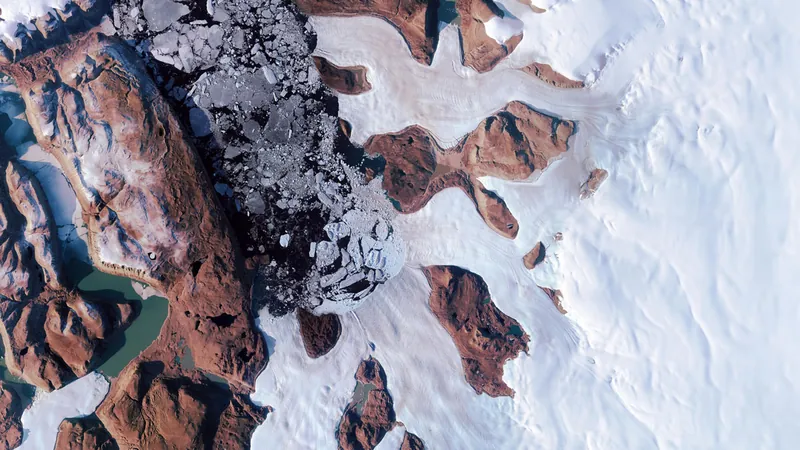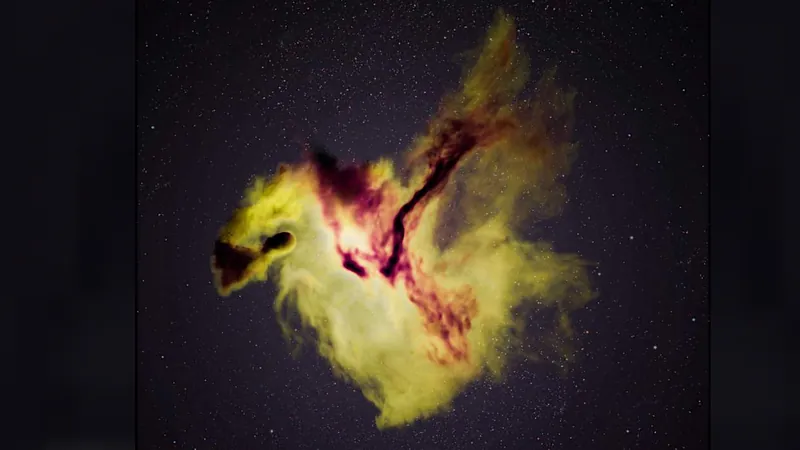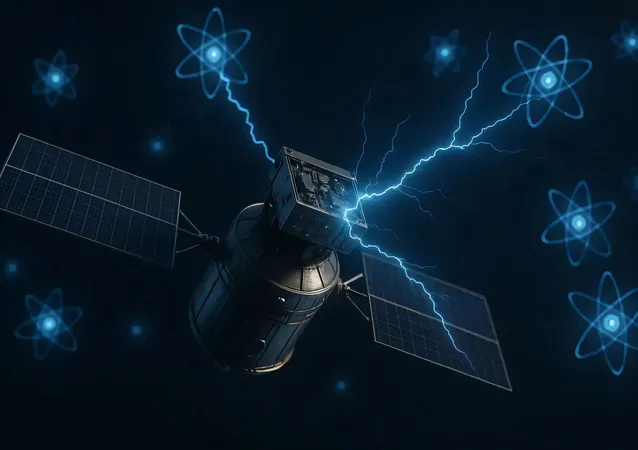
Shocking Discovery: Subglacial Water Erupts Beneath the Greenland Ice Sheet!
2025-08-28
Author: Rajesh
A Hidden World Beneath the Ice
Greenland, a land cloaked in ice, holds secrets beneath its surface—hidden lakes that could dramatically alter our understanding of glacial dynamics. Recently, researchers discovered an astonishing event: a subglacial lake erupted through the Greenland Ice Sheet, an unprecedented occurrence that sheds light on the interaction between subglacial water and ice.
Unveiling the Mystery of Subglacial Lakes
Despite the known presence of subglacial lakes beneath Antarctica, Greenland's subglacial water bodies have remained relatively unexplored. 'We first discovered them about a decade ago,' explained Mal McMillan, a polar scientist involved in the research. Subglacial lakes play a crucial role in how ice sheets function; their drainage impacts both sea level rise and local ecosystems.
Groundbreaking Findings from Satellite Data
The research team made a stunning discovery while examining archival satellite data. A massive area of 2 square kilometers had plummeted by over 80 meters in just ten days, indicating something monumental had occurred beneath the ice. They deduced that a subglacial lake had drained, leaving overhead ice unsupported and causing it to collapse.
In total, approximately 90 million cubic meters of water—about 3.1 billion cubic feet—poured out, marking one of the largest recorded subglacial floods in Greenland's history. But this was just the beginning.
Fractures and Floods: The Ice's Response
A kilometer downstream, researchers noted a vast expanse of fractures and smooth ice, suggesting that the floodwaters had surged upward through the ice, flowing across the surface before re-entering the ice several kilometers away. 'This is something we have never witnessed before,' McMillan noted.
Linking Events: Glacier Calving and Flooding
During this same time frame, the Harder Glacier experienced its seventh-largest calving event in three decades. While a direct connection between the lake’s drainage and the calving isn’t confirmed, the timing raises eyebrows. 'It’s likely the calving was related to the massive water influx from the lake,' McMillan suggested.
The Slowdown Dilemma
The study found Harder Glacier decelerated dramatically—three times faster than normal—right after the lake drained. This slowdown might be linked to drainage channels formed by the flood, which allowed subsequent meltwater to flow more efficiently. McMillan likened it to sliding down a waterslide versus a rocky slope.
Looking Ahead: Are More Events on the Horizon?
McMillan and his colleagues aim to understand if this was a rare incident or part of a broader trend. Access to more frequent satellite data will be crucial in determining the mechanics behind such subglacial events.
The Importance of Historical Data
This research highlights how crucial it is to revisit past satellite data. According to Winnie Chu, a polar geophysicist, the study demonstrates that valuable insights can emerge from overlooked datasets, paving the way for deeper understanding of our changing climate.



 Brasil (PT)
Brasil (PT)
 Canada (EN)
Canada (EN)
 Chile (ES)
Chile (ES)
 Česko (CS)
Česko (CS)
 대한민국 (KO)
대한민국 (KO)
 España (ES)
España (ES)
 France (FR)
France (FR)
 Hong Kong (EN)
Hong Kong (EN)
 Italia (IT)
Italia (IT)
 日本 (JA)
日本 (JA)
 Magyarország (HU)
Magyarország (HU)
 Norge (NO)
Norge (NO)
 Polska (PL)
Polska (PL)
 Schweiz (DE)
Schweiz (DE)
 Singapore (EN)
Singapore (EN)
 Sverige (SV)
Sverige (SV)
 Suomi (FI)
Suomi (FI)
 Türkiye (TR)
Türkiye (TR)
 الإمارات العربية المتحدة (AR)
الإمارات العربية المتحدة (AR)